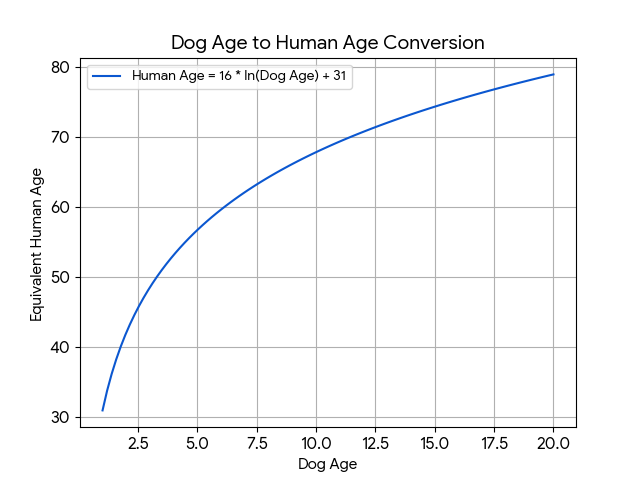The Real Dog Age Calculator
How Old is Your Dog in Human Years?
Moving Beyond the 7-Year Myth: A Scientific Approach to Your Dog’s Age
For generations, we’ve been told a simple rule: one dog year equals seven human years. It’s an easy calculation that has become a widely accepted piece of common knowledge. But is it accurate? According to modern science, not at all. The “multiply by seven” rule is a myth that fails to capture the complex and fascinating way our canine companions age.
Dogs do not age linearly like that rule suggests. They experience an incredibly rapid maturation process in their first year of life, and then their aging rate slows down considerably over time. A one-year-old dog is far more mature than a seven-year-old child. But an eight-year-old dog ages more slowly than a human does between ages 50 and 56.
This advanced Dog Age Calculator throws out the old myth. It uses a scientifically validated formula developed by researchers studying the canine genome. It provides a much more accurate equivalent of your dog’s age. It will help you understand their true life stage and provide them with the best possible care.
Calculate Your Dog's "Human" Age
The Science of Aging: DNA Methylation and the Epigenetic Clock
So, if the 7-year rule is wrong, what’s right? The answer lies in our DNA. Scientists at the University of California San Diego School of Medicine studied a process called DNA methylation. Think of it as an “epigenetic clock” that ticks away throughout a mammal’s life. As an individual ages, specific chemical marks (methyl groups) are added to their DNA in a predictable pattern.
By comparing the methylation patterns in the genomes of dogs and humans, researchers were able to create a formula that directly aligns the life stages of the two species. This resulted in a far more accurate, albeit more complex, equation:
Human Age = 16 * ln(Dog Age) + 31

Let’s break down what this means:
ln(Dog Age)refers to the natural logarithm of your dog’s chronological age.- The formula shows that dogs experience a massive developmental jump early in life. A 1-year-old dog, for example, is equivalent to a 31-year-old human, not a 7-year-old!
- After this initial burst, the aging curve flattens. The difference between a 10-year-old and 11-year-old dog is much smaller in “human years” than the difference between a 1-year-old and 2-year-old dog.
This calculator does the complex math for you, instantly revealing a more accurate picture of your dog’s developmental age.
Why Knowing Your Dog’s “Real” Age Matters
Understanding your dog’s true life stage is more than just a fun fact; it’s a vital part of being a responsible and empathetic owner.
- Tailored Healthcare: Knowing your 6-year-old dog is like a person in their late 50s helps you and your vet make proactive decisions about senior wellness checks, blood panels, and age-appropriate diets to catch potential health issues early.
- Behavior and Training: It helps explain why your 2-year-old dog (who is like a 42-year-old human) has settled down from their “teenage” antics, or why your 10-year-old dog (nearing 70 in human years) may be less interested in strenuous activity and more prone to anxiety.
- Deeper Empathy: It fosters a deeper appreciation for your dog’s needs. You wouldn’t expect a 65-year-old person to have the same energy as a 25-year-old, and the same applies to our dogs. It allows us to adjust our expectations and provide care that is perfectly suited to their stage in life.
Use this tool to connect with your dog on a deeper level and become an even better advocate for their health and happiness throughout their precious lives.
This calculator is based on a scientific study and provides a more accurate model of aging than older methods. However, individual aging is affected by breed, size, health, and genetics. This tool is for educational purposes.